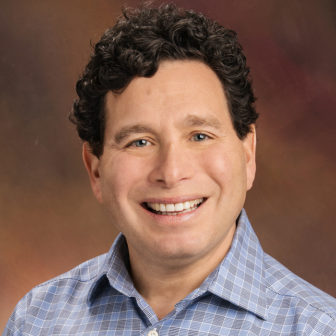![]() PHILADELPHIA — As a doctor in an emergency department that only sees children, I have the unfortunate experience of witnessing the impact of violence on our youngest members of society. Getting through adolescence is difficult enough, but for teens exposed to violence the transition to adulthood can be disrupted and even more difficult.
PHILADELPHIA — As a doctor in an emergency department that only sees children, I have the unfortunate experience of witnessing the impact of violence on our youngest members of society. Getting through adolescence is difficult enough, but for teens exposed to violence the transition to adulthood can be disrupted and even more difficult.
One story from my practice makes this clear.

Joel Fein
David, a 15-year-old in the 10th grade, was being bullied by other boys in his school. One afternoon, David was attacked by some of those boys. He suffered injuries to his head and arms. He went home, but because of a headache that would not go away he went to a local emergency department where he received a diagnosis of concussion and a laceration on his arm.
David’s mom was angry at the school for not handling this issue before it led to his injury and wanted to press charges against the boys who hurt him. David was scared that things would get worse if that happened, so he begged his mom not to. Over the next few weeks, David started missing school more because of his headaches, and avoided going outside much at all. He lost his formerly voracious appetite, and stopped playing basketball at the local playground. His mom was concerned about these changes, and learned that the next possible appointment with his primary care doctor would be a few weeks away. To protect himself, David considered bringing a knife or other weapon to school in case the boys attacked him again.
Stories like David’s are common in many schools and neighborhoods across the country. Here in Philadelphia, we are passionate about our neighborhoods. However, sometimes that passion gets the best of people and they use violence to settle arguments over girlfriends or boyfriends, parking spots or business deals gone bad. Sometimes that violence results in death. In 2018, 310 people died from gun violence in Philadelphia. In 2019 so far, that number is up to a staggering 325, and the year is not up.
Boys and girls of color suffer the most from this issue, creating a significant health disparity that is only exacerbated by structural and institutional racism. Nonfatal injuries from guns are much more common, and getting even more so because our ability to save lives in the emergency department has improved over the decades. The burden of gun violence on our medical systems, and medical staff, is overwhelming. In hospitals we witness the bullet holes, knife wounds and broken jaws that come from these arguments — it’s all part of a day’s work. But the emotional toll of taking care of these victims is tremendous. For health care workers on the front lines, who see the same young people coming back multiple times with violent injuries, it can lead to hopelessness and burnout.
The Power of HVIPs
We also know that our nation’s gun violence epidemic goes beyond the well-known problem of mass shootings or gunfire between adults on street corners. Peer violence is pervasive in the lives of both boys and girls as young as eight years old, and these experiences can escalate over time to serious injury or death.
The good news is that many medical professionals recognize this public health crisis and are trying to do something about it. In fact, some of the medical centers that see kids like David have developed programs that do much more than just treat his physical wounds and send him home.
In emergency departments, trauma units, and intensive care units, these hospital-based violence intervention programs (HVIPs) meet victims in the hospital or soon after they are discharged and take measures to address the psychological and emotional issues that accompany the medical and surgical problems that result from violent injury — and prevent further incidents.
At HVIPs, community-based specialists on staff, who often have their own background of violent injury, meet patients where they are, listen to them and learn as much as possible about what they need to heal both inside and out. This can include keeping them safe when they are in the hospital, and especially when they leave; mediating between the people involved in the original incident to avoid retaliation; and helping them access and navigate the multitude of legal, medical and victim services systems in which they will become entangled. All this takes time, patience and a dedicated person or team to provide wraparound services to patients, as well as their families and friends, in order to keep them safe and help them recover.
For kids like David, we also know that the most important protective factor is the consistent presence of a caring adult. This is often a parent or close relative, but it can also be a teacher, coach or mentor. For HVIPs that take care of our youngest victims, it is therefore especially important to involve and engage family members in the program.
Our Violence Intervention Program at Children's Hospital of Philadelphia (CHOP) strives to do just that. We have daily successes — along with sometimes hourly challenges — as we work within troubled municipal and mental health care systems. Working with the child and their family, we meet close to 70% of all the goals they express and almost 100% of the goals that relate to safety and security. Our violence prevention work is with individuals rather than entire communities or policymakers. Yet the unique nature of each family’s issues is underscored by theirs and their neighbors’ collective traumatic experiences. We create systemic change by meeting with leaders of city and state agencies, hospital leaders and advocacy organizations to give these families a voice.
Challenging work
This work is challenging. Yet the movement to use this model of violence intervention is growing. For 10 years, the Health Alliance for Violence Intervention has brought together HVIPs across the country as they have begun to proliferate; today, there are over 30. As we work together, provide peer support and share information, our work becomes stronger and more effective for the people at greatest risk of violent injury. Research now shows that HVIPs save lives, reducing repeat violent injuries and addressing socioeconomic risk factors. They also cost pennies on the dollar compared to the expense of caring for an injured victim.
You can see the way these programs work in practice in the stories of kids like David. His family quickly heard from one of our specialists, who invited them to participate in an intake session to set goals toward healing and recovery. We accompanied his mother to visit the school counselor and principal to establish a safety and monitoring plan for David as he returned to school. The school filed a security report to help his family gain Victim’s Assistance funds to reimburse their medical expenses. Over the next few months, David received care in the hospital’s concussion clinic, and he and his mother participated in trauma-focused cognitive behavioral therapy with good resolution of his traumatic stress symptoms.
David also got emotional support designed for kids his age. He participated in our peer-led, psychoeducational group therapy sessions and, by telling his story and explaining how he’s dealing with it, he came to be regarded by the group as a positive influence. By the time he was discharged from our program, he felt more control over his emotions and perceived himself as a “helper” to others in the program. For kids like David, HVIPs offer a vastly better outcome than traditional emergency treatment — and they also go a long way toward preventing violence in the future.
Joel Fein, M.D., M.P.H., is an attending physician in the Emergency Department at Children's Hospital of Philadelphia and co-director of its Violence Prevention Initiative. He also serves as the research co-director for The Health Alliance for Violence Intervention.
